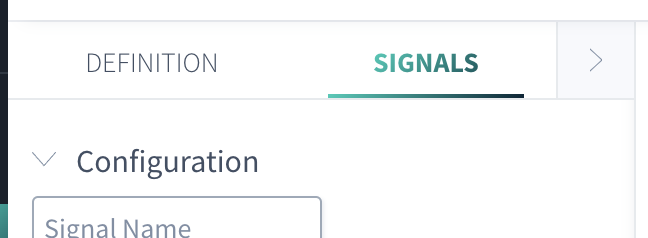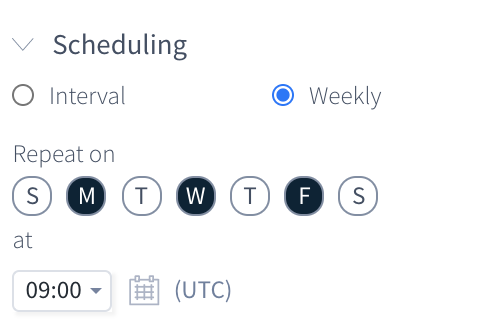Scuba Signals
Scuba Signals is an alert and monitoring feature that enables users to:
Define alert criteria
Define the frequency of alert checks
Specify a list of recipients that will be notified if an alert is triggered
Receive notifications with an attached data visualization and a link to the query
Why use Signals?
Nobody has enough time to manually track every metric, every day and maintain full visibility of all the important changes in their data. Scuba Signals saves you time and provides peace of mind knowing that you will be notified if something critical changes in your data.
How it Works
Imagine you’re working at a rapidly growing SaaS company that sees a consistent increase in their overall usage week over week. You may find it insightful to discover that contrary to the typical trend there has been a recent decrease in overall usage. Rather than manually running a query every week to see if such a decrease has taken place, Scuba Signals can be used to schedule the query and automatically alert users when those usage numbers are above or below pre-selected thresholds.
Step 1 - Defining Measures for Use in Signals
First, set up the measure(s) you would like to be alerted on. This is the same as any other query definition, but in our example we are using a simple count of events, between 7 days ago to now.

Step 2 - Navigating to Scuba Signals
Scuba Signals are defined in the Explore page next to the query definition window, under the Signals tab. The measures that you want to use in a Signal configuration need to be defined in advance under the “definition” section. If the measures are not defined, they will not show up for use under Condition.
Now that you have defined the measure(s) you want to monitor, we can head over the Scuba Signals by clicking on the Signals tab.

Step 3 - Set Signal Condition
Enter a name for your Signal, and optionally a description. Then, designate your Signal Condition. If you have multiple measures or a time offset defined, or have specified a Split By property, you can use them in your condition check. Alternatively, enter a number in either drop-down pill to set a static threshold or percentage:

Step 4 - Scheduling & Delivery
Lastly, specify how frequently you want the comparison to run. You can set this to be at a certain interval (X hours, days, weeks) or at the same time on a given day of the week (or certain days) as shown below.

Then, enter an email subject line and who should receive the email alert, and click Create.

After creating this Signal, the listed email will receive an email alert with the Events over 500 subject line any time the specified Signal condition is met. Checking “Include Graph” will add an inline snapshot of the chart from when the condition was met. Including the Query URL will include a link to bring the recipient directly to the specific query in Scuba so that deeper analysis can be performed as necessary.
As of our 4.13 release, Scuba Signals are also available for integration with Slack or Teams. Contact your Scuba representative, or reach out to us at support.scuba.io to learn more.
